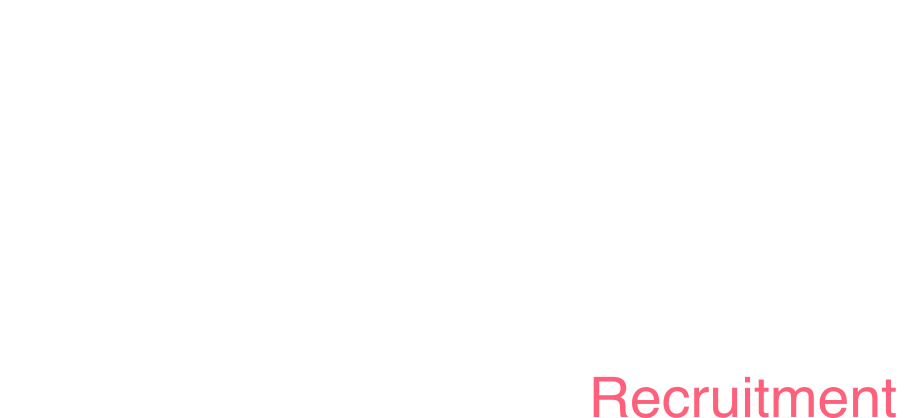How Tech Leaders Can Tackle Return-to-Office Hiring
14 Jul, 20258 MinutesThe return-to-office trend is gaining pace, and for many tech leaders, it’s creating m...

The return-to-office trend is gaining pace, and for many tech leaders, it’s creating more friction than focus. Your teams want flexibility. Your business wants performance. The talent you need is prioritising autonomy over office snacks.
This blog lays out:
- Why rigid in-office mandates are undermining your recruitment strategy
- What product and engineering candidates want from workplace models
- How hybrid tech teams can drive collaboration and retention
- The real hiring risks of ignoring remote expectations
- Practical steps to adapt your hiring model without compromising on quality
Whether you’re building out engineering roles, leading digital recruitment across UX, or navigating the challenges of product management recruitment, here's what you need to know.
The Post-Remote Shift: Why RTO is Back on the Table
The shift to remote work during the pandemic wasn’t a stopgap. For most tech teams, it proved that distributed working could deliver results. Fast forward to 2025, and many employers are now pulling back, reintroducing return-to-office policies under pressure from exec boards, shareholders, and leadership teams eager to regain control.
We’ve seen it first-hand across engineering recruitment, digital roles, and product management recruitment.
What’s Driving the Return?
A few core concerns keep coming up in conversations with leaders we work with:
- A perceived drop in collaboration and knowledge sharing
- Cultural dilution across distributed teams
- A disconnect between juniors and seniors in mentorship and training
- Slower product cycles and decision-making due to asynchronous workflows
- Weaker onboarding experiences for new hires unfamiliar with the team or tools
There’s also the influence of enterprise giants like Amazon and Dell, who are reinstating in-office expectations and setting a tone many startups feel pressure to follow.
Still, size doesn’t equal strategy. While corporates might absorb the hit, scaling firms with high stakes engineering recruitment pipelines feel the impact faster. Especially not when hiring remains tough.
The Culture vs Flexibility Divide
For tech leaders, this return-to-office shift is often framed to being about protecting culture and cohesion. But many teams have already redefined what culture means. It’s no longer ping pong tables and pizza Thursdays. It’s trust and autonomy, paired with the flexibility to work where you’re most productive.
That disconnect is where hiring friction begins.
Candidate Pushback is Real – Here’s What They’re Saying
Return-to-office hiring may look good on paper, but it often falls flat in practice, particularly in tech, where the last five years have reset candidate expectations across the board.
Developers, product managers, UX designers, and data analysts don’t just want flexible hours; they’re looking to avoid rigid structures. For many, hybrid or remote-first roles are a baseline expectation, not a benefit.
Why Flexibility Wins
Across the MRJ network, we’re seeing a consistent theme: when flexibility is off the table, the best candidates often are too. Candidates who would once relocate for the right brand are now walking away from roles that don’t offer hybrid setups or remote options.
It’s not really about office perks anymore. People just want more say in how they work, and enough room to do their best without being boxed in.
- 81% of tech employees say they’re more productive working from home
- 52% of employers report productivity improvements post-remote shift
- Offer rejection rates spike for in-office-only roles in engineering and product management
The Cost of Misalignment
For hiring managers, insisting on office-first models can silently narrow your access to talent. Especially for engineering and digital roles where skill shortages are already acute. Offer rejections. Slower time-to-hire. Shrunken candidate pools. It all adds up.
Your existing employees have noticed policy changes, too. We’ve seen hybrid rollbacks trigger resignations from senior product and engineering talent who feel a mismatch between company values and day-to-day reality, primarily for engineering and digital roles, where skill shortages are already creating hiring pressure.
Hybrid Models That Work
Hybrid isn’t a compromise. For the best tech teams, it’s a competitive advantage. Done right, hybrid setups let people choose how they work best, while still supporting the collaboration that fuels great product delivery. What matters most is that people know what to expect, and that it stays consistent.
Practical Ways to Make Hybrid Work
Hybrid looks different everywhere, but there are a few principles that help it stick:
- Set clear in-office expectations (e.g. 2 days per week, team-led)
- Invest in async-first workflows to minimise meeting overload
- Prioritise face time around planning, onboarding, or cross-team alignment
- Be consistent. No one wants to play guessing games with policy
The most successful hybrid teams we work with treat flexibility as part of their culture, not a perk. They also build it into how they communicate roles, especially for product management recruitment or software hires.

What Top Candidates’ Value
Product managers want space to think, not a desk for optics. Engineers want autonomy and clear comms. UX designers want time to focus. Across the board, the message is the same: if hybrid just sounds nice on paper, it won’t land. But when it’s backed by structure and trust, it can make all the difference.
Where Hybrid Works Best
Some roles are more flexible by nature. For example:
- Product management recruitment benefits from hybrid tech teams because strategic planning often happens best in person, but deep thinking happens means letting people solve problems on their own terms
- UX and UI specialists often do their best work away from distractions
Build around that. Don’t fight it.
RTO's Impact on Hiring Outcomes
When companies double down on rigid return-to-office models, the knock-on effects often hit hiring teams first. You may not see it straight away. But over time, the pipeline slows and the quality of applicants dips. And roles that used to be easy to fill stay open for weeks.
We’ve seen it first-hand across engineering recruitment, digital roles, and product management hiring.
What We’ve Seen From Clients
Some companies are finding it harder to fill mid-level engineering jobs than they were during the peak of the pandemic. Others have had to lower their expectations or extend search timeframes by 4–6 weeks to secure decent candidates.
And then there’s the brand impact. In-office mandates affect more than just reach. They can also shift how candidates perceive your culture. In a competitive market, that’s enough to push top applicants towards a more flexible competitor.
Location Limits are a Silent Killer
The second you restrict hiring to a 30-mile radius of your office you lose reach.
Tight radius hiring policies shrink access to top performers who might be open to hybrid, but not relocation. Recent research found that while just over half (52%) of UK workers never work from home, this drops to only 29% for highly skilled professionals.
It’s a reminder that most hybrid roles still anchor staff to city-centre offices in places like London and other major cities, limiting mobility and talent spread. This especially affects senior hires, niche tech stacks, and cross-functional product roles that already have limited market depth.
Engineering recruitment agencies and internal teams alike feel that pressure. Soften the scope, and things shift fast.
What Tech Hiring Leaders Can Do Differently
There’s a way to meet your business needs without shutting out the talent you need to grow. And it starts with fixing the gap between policy and experience.
Communicate the why of your policy
Hybrid isn’t only about where people work. It also depends on why the model exists in the first place.
We’ve seen stronger results from tech companies that are open about how they’ve shaped their working model. When teams understand the purpose behind policies, whether it’s about improving collaboration, meeting security needs, supporting high-performance environments, or simply giving teams the structure they need to succeed, it’s easier to get buy-in.
When that reasoning is missing or unclear, candidates are left to fill in the blanks themselves, often assuming the worst. But when companies lead with clarity and context, it shows confidence and makes those policies easier to support internally and externally.
Make sure hiring managers can confidently explain your model to candidates. Be upfront in job descriptions. And avoid vague phrases like “flexible” or “hybrid” unless you back them up with detail.
Make in-office time worth it
People will come in if there’s a reason to. That might be sprint planning, team-led rituals, access to leadership, or mentoring time.
We’ve seen clients keep engineers engaged in hybrid setups by creating space for collaboration and deep focus. Others build learning cultures that make office time feel additive, not forced.
The point isn’t to sell a day in the office. It’s to make it meaningful.
Partner smart to refine your approach
If your model isn’t landing, or if your hires are slipping away at offer stage, you don’t have to fix it alone. We help high-growth tech teams shape working models that support attraction, retention, and long-term performance.
From helping write job specs that reflect reality, to advising on location scope and salary benchmarks, we partner with hiring teams at every stage.
Explore how our Standard Service or Talent as a Subscription models could flex to your goals.
RTO FAQs
Why are companies pushing for a return to the office?
Most businesses cite visibility, collaboration, and productivity as the main reasons. Some also see it as a way to justify existing real estate investments. But the truth is, many of these goals are achievable through thoughtful hybrid models, without sacrificing team satisfaction or candidate interest.
What do candidates want most in 2025?
They’re asking for more than perks. They want clarity around expectations and genuine flexibility in how they work. Candidates are also pushing for flexibility that’s genuinely built into the culture, not just promised on paper.
How does hybrid hiring improve retention?
When people feel trusted to manage their time, they’re more engaged and less likely to leave. A well-structured hybrid model can provide that balance: the autonomy employees want, and the connection that helps teams stay aligned and motivated. Over time, that kind of environment improves loyalty and long-term performance.
How can I assess if my current model is limiting our talent pool?
Look at who’s turning down offers and why. If location or vague flexibility comes up, that’s a red flag worth fixing.
What to Do Next
Rigid return-to-office policies can shrink your hiring pool, increase time-to-fill, and hurt your brand with the very people you’re trying to attract. Hybrid models, when done well, give tech teams the autonomy they want without losing the collaboration that makes work meaningful.
If you’re rethinking how you hire post-remote, here’s what to focus on:
- Get clear on your model. Spell out expectations.
- Align hiring messaging with how your teams work.
- Make in-office time purposeful, not performative.
- Stay open to candidates outside rigid locations.
The market’s moved. Candidates have too.
If you want to stay competitive, your hiring strategy needs to reflect that shift.
We work with scaleups and high-growth teams to shape hybrid-ready hiring models that attract, engage, and retain top-tier talent, from product management recruitment to engineering jobs, digital roles and beyond. Whether it’s refining job ads or shaping a hiring model that fits your team, we help hiring teams build for how people work now.
Get in touch to talk about building a model that fits your people and your business.




